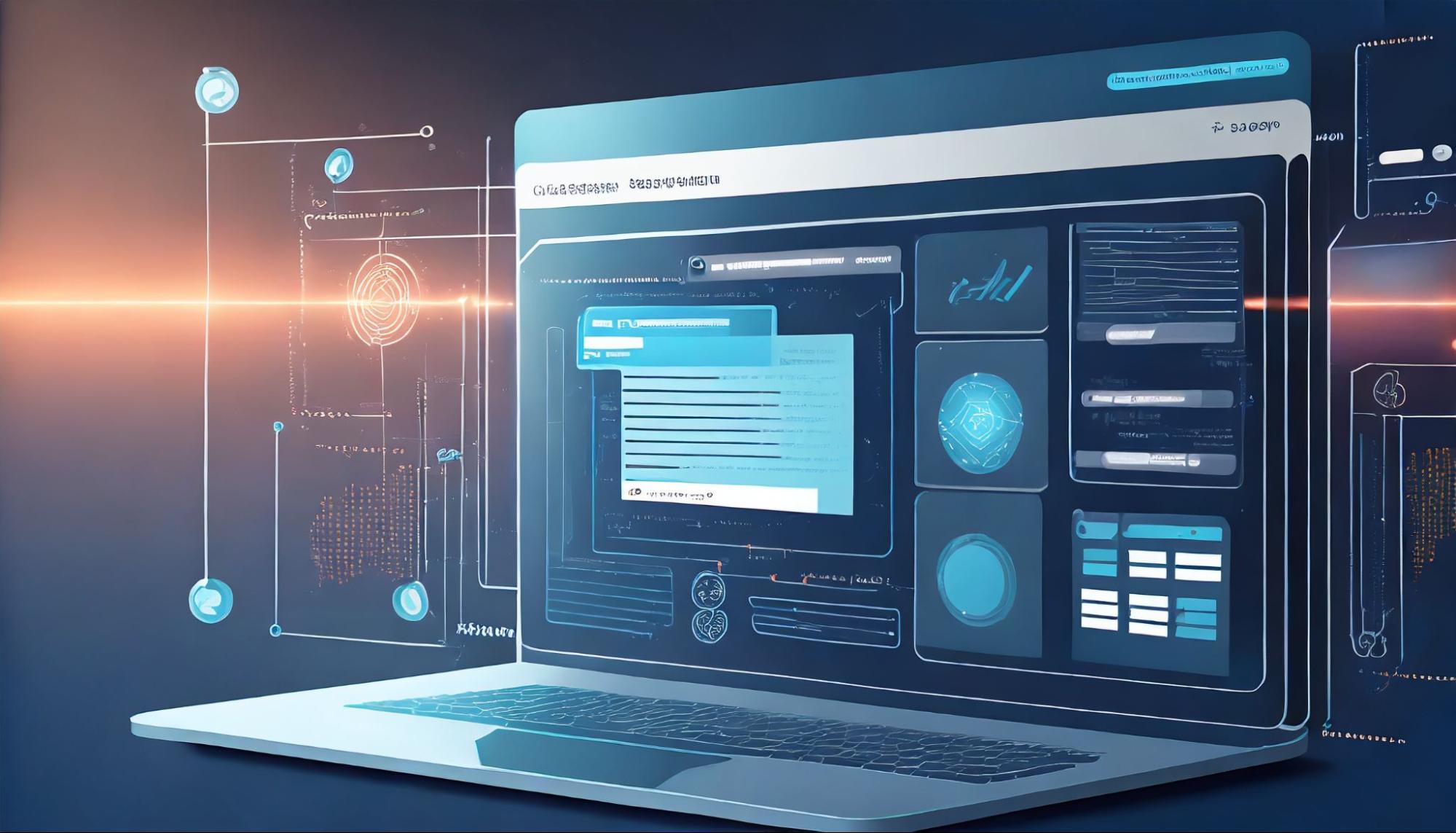The Power of AI in Website Optimization
In today's highly competitive world, businesses must have an optimized website to succeed online. Delivering an exceptional user experience and value through your content is crucial to driving qualified organic traffic to your website. But producing high-quality content at scale is not always easy. Yuliia Zadachenkova, Middle PMM at Serpstat, talked about the developments in artificial intelligence and the revolutionary possibilities for optimizing websites at our Digitalzone23' event! Click here to listen to the presentation and learn more about the topic!

In this comprehensive guide to using AI to maximize your website's traffic, leads, and revenue, we will go into detail.
Establishing the Base: Health Diagnostics for Websites
Before starting an optimization journey, you must have a clear understanding of the state of your website and where it can be improved. Keep a regular eye on these key performance indicators (KPIs):
Traffic Patterns
Monitor the sources and total amounts of your organic traffic over time. The objective is steady, healthy growth. Look for these on Google Analytics:
- Total Visitors
- Pages per visit
- Bounce rates
- Traffic by source and campaign
Stagnation or abrupt drops indicate that you may be negatively impacted by technical difficulties, quality reductions, or changes to the Google algorithm. When it comes to diagnostics, be proactive.
Visibility of Keywords
Can users find your website with ease using relevant search terms? Which keywords are most popular? Analysis of query volumes, difficulty, and ranking positions can be obtained with tools such as Serpstat.
Increase visibility by focusing on relevant keywords that are related to your goods and services. However, do not overoptimize to the detriment of the user experience.

Source: Adobe Firefly
Performance of Landing Pages
For long-term success, your money pages need to turn infrequent visitors into leads and paying customers. Analyze KPIs for landing pages such as:
- Bounce rates
- Time on page
- Conversion rates
Inadequate performance suggests gaps in the content. Make landing page optimization a top priority to increase conversions.
After evaluating reports to establish the baseline health of your website, you can create focused improvement plans.
Developing a Successful Optimization Plan
Approach website optimization with a thorough plan of action, just like you would any other business initiative:
#1: Comply with Search Patterns
The most effective content speaks to the current trends in human search behavior. Thus, use resources to stay up to date on questions and topics that are trending.
- Look up popular search terms with Google Trends
- Respond to Common Public Questions about Keywords
- New search trends: Serpstat Content Gap Tool
Keeping an eye on interests provides rich material for content ideas that might naturally become viral.
#2: Comparison of Competitors
When it comes to optimizing pages, there's no need to start from scratch. As competitors outrank them, astute marketers study their competition to see what works. Analyze why their content converts more effectively by doing the following:
- Contrasting the designs of pages
- Observing subjects addressed
- Assessing appeals for action
Well-ranking websites have already matched user intent for those search terms. Therefore, take what they're doing well and expand upon it!
#3: Establish Optimization Objectives
Establish quantifiable optimization targets and KPIs up front that are in line with business goals, just like you would with any marketing campaign. Samples of websites for products:
- Within six months, increase organic traffic by 25%
- Boost the visibility of 20 main product terms with keywords
- Cut 10% off of landing page bounce rates
- Increase 15% of landing page conversion rates
Quantifiable goals allow for data-driven progress evaluation and hold everyone accountable.
Optimizing More Efficiently with AI Tools
The exciting part is about to begin: using AI tools designed specifically to make website optimization easier! Time-consuming manual tasks give way to automation, insights, and enhanced human creativity with modern artificial intelligence.

Source: Adobe Firefly
Perform Quick Competition Analysis
Start projects by gathering the keywords, subjects, and metadata that are driving the SEO success of your rivals. Utilize AI assistants to expedite market reconnaissance to determine the gaps on your website. Automated exploration reveals:
- Unique and shared keywords generating interest
- Relevant search terms for the goal
- Best-performing webpages as standards
Focus on lucrative chances to release new content that meets consumer demand.
Generate SEO-Friendly Content Effortlessly
AI can generate well-researched drafts of blogs and articles in an instant, saving you time and effort as you refine them. Modern language models such as GPT-3 provide a variety of original starting points that are immediately optimized for engagement and rankings. Specify your content strategy and create countless summaries, headlines, and entire articles with customized SEO components such as:
- Target keywords are subtly incorporated with pertinent questions.
- A useful header structure
- Strong meta descriptions
You can now focus on fine-tuning and publishing-ready asset finalization.
Make Content for Social Media That's Snacky
Promoting your content on social media is necessary to increase viewership. However, it takes a lot of work to create posts that are specifically tailored and sized for each platform. Instead, feed your articles and blog posts to AI writing assistants who will convert lengthy pieces of content into bite-sized chunks.
Pre-optimized for important components on every channel, auto-generated social copy includes things like:
- Reduced word counts
- Vibrant pictures
- Captivating captions
In just a few seconds, schedule or queue an infinite stream of social media posts showcasing your most recent website content.
Examine and Keep Improving Live Pages
Intelligent AI measures a page's level of optimization and suggests tweaks to increase visibility and decrease bounce rates. The built-in diagnostics look at things like:
- Scores for readability
- Placement of keywords
- Link analysis
- Use of media
Bring underperforming pages back to life with automatically improved metadata, organization, and messaging based on empirical data. High-authority websites maintain their competitiveness through ongoing optimization.
Conclusion and Next Steps
Streamlining website optimization at scale is achievable with the correct AI toolkit. Begin by evaluating the overall health of your website and develop an optimization plan that is in line with business KPIs. If you want to expedite time-consuming tasks like writing, promotion, and research, look to automation. And keep trying to improve page experiences at all times.
With any luck, this post helped to clarify the various ways that AI can be used in optimization processes!
This content was created by Nursena Küçüksoy, Marketing Specialist at Zeo.


















